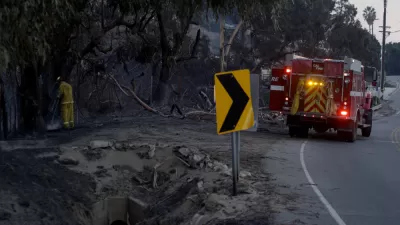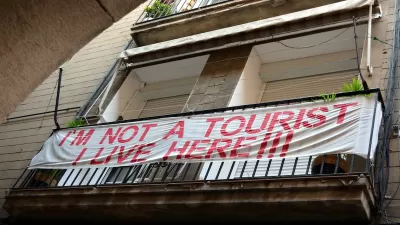An analysis of Airbnb properties across the state shows that despite the high fire risk in many parts of the state, the company and hosts frequently don’t provide adequate warning and evacuation instructions to guests.

“Across California, thousands of short-term Airbnb rentals operate in the state’s most hazardous fire zones, but the company does not provide warnings or evacuation information to guests when they make a reservation, a Los Angeles Times analysis has found.”
According to an article by Ben Poston and Alex Wigglesworth, “More than 23,000 California Airbnb listings were in wildfire-prone areas in January, accounting for about 20% of the company’s short-term rentals in the state, The Times’ analysis shows.” Yet “The Airbnb website doesn’t routinely alert customers when properties are in a wildfire hazard zone. Many rental hosts ban smoking, fireworks, charcoal grills or campfires but don’t specifically mention wildfire risks.” Moreover, “Some customers say the company’s policies actually incentivize people to travel to areas near active wildfires, potentially clogging evacuation routes and burdening emergency responders.”
Some cities are taking action to implement stricter regulations for short-term rental hosts. In Malibu, “Hosts are now required to post a code of conduct in rental units telling guests the city is located entirely within the highest fire hazard area. It also tells renters which evacuation zone the property is in, and lists a city website that provides evacuation information.” In Truckee, “Short-term rental operators must post an evacuation map on-site, as well as a flier that notifies guests they’re staying in a high-risk area for fire and tells them how to sign up for emergency alerts,” and rental properties face mandatory inspections every three years.
FULL STORY: In California’s high-risk fire country, Airbnb offers guests no warning or escape plan

Trump Administration Could Effectively End Housing Voucher Program
Federal officials are eyeing major cuts to the Section 8 program that helps millions of low-income households pay rent.

Planetizen Federal Action Tracker
A weekly monitor of how Trump’s orders and actions are impacting planners and planning in America.

The 120 Year Old Tiny Home Villages That Sheltered San Francisco’s Earthquake Refugees
More than a century ago, San Francisco mobilized to house thousands of residents displaced by the 1906 earthquake. Could their strategy offer a model for the present?

Alabama School Forestry Initiative Brings Trees to Schoolyards
Trees can improve physical and mental health for students and commnity members.

NYC Outdoor Dining Could Get a Re-Do
The city council is considering making the al fresco dining program year-round to address cost concerns from small businesses.

HSR Reaches Key Settlement in Northern California City
The state’s high-speed rail authority reached an agreement with Millbrae, a key city on the train’s proposed route to San Francisco.
Urban Design for Planners 1: Software Tools
This six-course series explores essential urban design concepts using open source software and equips planners with the tools they need to participate fully in the urban design process.
Planning for Universal Design
Learn the tools for implementing Universal Design in planning regulations.
Ada County Highway District
Clanton & Associates, Inc.
Jessamine County Fiscal Court
Institute for Housing and Urban Development Studies (IHS)
City of Grandview
Harvard GSD Executive Education
Toledo-Lucas County Plan Commissions
Salt Lake City
NYU Wagner Graduate School of Public Service




























